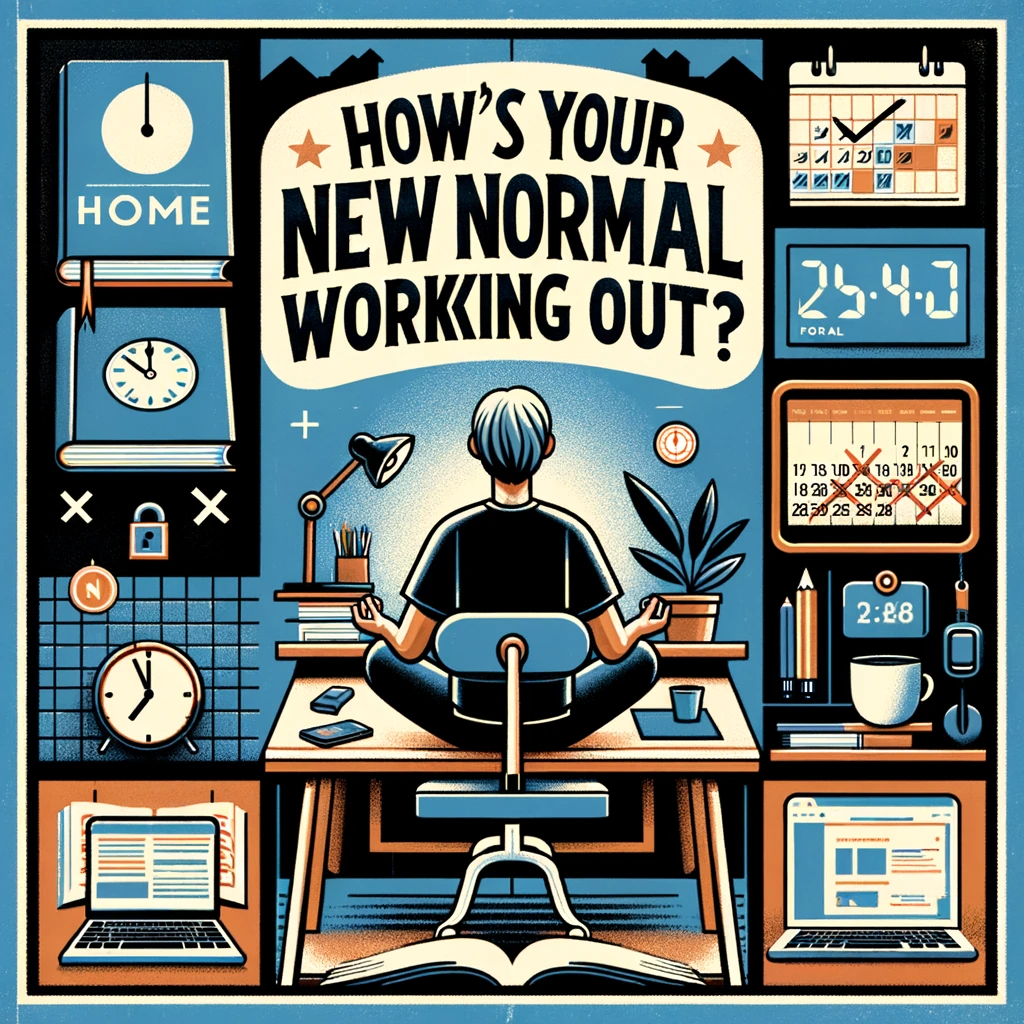Our worlds have been rocked.
We’ve all had to do a lot of adjusting in the past week or so. Swift changes are taking place in our lifestyles. I’m sure you’re getting daily (or hourly) updates on the physiological effects of the COVID-19 virus. What I want to focus on, though, are the psychological and emotional effects.
Freedoms Take a Back Seat
As Americans, we’re not used to having our freedoms restricted. Or being told where we can – and cannot – go.
Jobs are changing. Incomes are being affected. The stock market is plunging. Schools are closed. Childcare challenges are at the forefront. Traditional sports competitions are gone. Travel is prohibited. Events are being canceled, right and left.
All this change takes its toll. As humans, we often have a hard time with change. Just look how freaked out we get when the power is out for a few hours! Some say we’re “overcorrecting,” and we’re being advised it’s for the greater good. In the meantime, these extreme measures have unintended side effects – and many businesses may never recover.
We’re seeing fear and anxiety running rampant. Which can lead to anger and pain. You’ve had about a week to get used to “the new normal.” At least as we know it — for the coming weeks or months — if predictions are accurate.
Out of Control
First and foremost, we’re driven at a basic level by the need for safety and security. And the need to be in control of our lives.
That’s all going out the window with this public health threat. While new information is coming in all the time — and we’re learning more about this virus — there’s still a lot we don’t know. And a vaccination is about a year away.
How do you deal with uncertainty? To cope in the midst of this storm, author Anne Lonsdorf has developed some simple strategies:
- Examine and identify your fears.
- Turn “what if” thoughts into “what is” statements.
- Be aware you can choose your thoughts (which result in your feelings).
- Take responsibility for yourself.
I’ve found the first two tips to be especially helpful. Sometimes we’re so overwhelmed with the “ain’t it awful” attitude that it’s hard to zero in on the fear that’s causing angst.
And then we’re off and running with every imaginable scenario. What if this happens? What if that happens? This is especially true for you planners and organizers out there. (Notice I didn’t say “control freaks!”) Stepping back and reframing the situation into “what is” statements helps to provide a reality check.
As you face uncertainties, it helps to realize that many of your basic needs are being met. Not to the extent you’d like, of course. It just helps to be grateful for the things that ARE going right, while you wait for the ship to right itself in other areas.
Go For the W.I.N.
A handy technique I’ve mentioned before is W.I.N. With everything swirling around, stop to ask yourself, “What’s Important Now?” This brings you into the present — and help you to focus on what you CAN control.
New systems are needed. If you’re working remotely – and the kids or grandkids are out of school – interruptions will abound. Finding ways to juggle everything can be unnerving. This is also time to share the load. Assigning household tasks can help provide more bandwidth for focusing on remote work and school assignments. The last thing you need is resentment over having to take care of too many things.
Getting organized also helps you feel in control. While you’re spending more time in your home environment, take the opportunity to catch up on projects – organizing those digital photos and cleaning up your computer files. This will provide a feeling of accomplishment. Of course, there are always those closets…
Cue up that YouTube exercise video – or pop in a yoga DVD for 15 minutes of personal gain. Make a dent in that stack of books on your nightstand. Or find a new series or two to binge watch. Also, occasionally unplug from the news — and social media– to avoid being overwhelmed.
Social distancing can even inspire other modes of connecting. How about catching up on some long-neglected phone calls? Or reintroducing the lost art of letter writing? And remember to indulge in those things that give you peace of mind – reading something inspirational, taking a hot bath, listening to some soothing music or going for a walk in nature.
Are We There Yet?
We all know this is going to take time. And we don’t know how long that will be. A week is hardly enough time to settle into a new normal. So be gentle with yourself.
Crisis situations can bring out the best — and the worst — in us. When fear sets in, folks may feel threatened and greedy – hoarding supplies like all the toilet paper rolls off a store shelf. On the other hand, I’ve seen an outpouring of support and generosity from volunteers that are helping with the interruption of meals caused by school closings. And offering to run errands and provide childcare.
Again, this crisis is pretty new. As we settle into the next few weeks, we’ll be able to see more predictability in our daily lives. That should help to settle down anxious behaviors.
Your Self Discovery Channel
A silver lining could be that you emerge from this crisis knowing you’ve weathered the storm – and have become more resourceful and resilient. That’s probably hard to see right now, though, when you’re in chaos.
As a result of social distancing, you’ve pulled back from crowds. If you’ve taken the opportunity to go within, you may have stumbled onto your own “Self-Discovery Channel.”
Too often our inner voices get drowned out by all the noise and activity in our outer worlds. This may even become a time when you’re able to gain some insights about your life by reflecting on what matters most to you. Journaling, meditation and prayer are helpful practices.
In this stillness you have the opportunity to look at what your priorities are, redefine your values and focus on what you really want to create in your life, says digital business consultant Destinee Berman. “With business, even in economic uncertainty,” says Berman, “there is light in adversity. We’re being asked to tap into our strength and resourcefulness. It is our inner creativity that will sponsor us through this.”
A Safe and Spiritual Signoff
I’d like to close with this alternative greeting I learned as an option to the elbow bump for a safe and spiritual greeting. It was created by artist, designer and author Amy Zerner, along with Maria Angelica Figueredo.
Place your hands in the prayer position and hold to your heart (yogic style). Rather than the traditional “namaste” greeting, say, “Nama-stay-away-from-me.”
©2020 Linda Arnold Live Life Fully, all rights reserved. Linda Arnold, M.A., M.B.A., is a syndicated columnist, psychological counselor and founder of a multistate marketing company. Reader comments are welcome at linda@www.lindaarnold.org For information on her books, go to www.lindaarnold.org/books or Amazon.com


